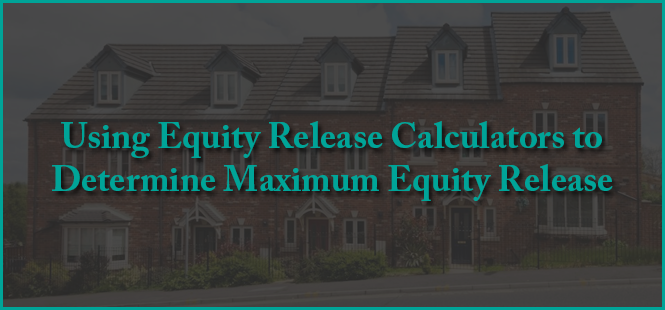Using Equity Release Calculators to Determine Maximum Equity Release | Equity Review
When people are considering equity release, the primary concern for most people is how to ensure that they obtain the maximum amount of release possible from their home. The majority of people obtaining equity release schemes are doing so to optimise their assets, especially if they are looking to purchase a second home. A conventional mortgage is not always desirable, since it will require a certain annual income to qualify and will require monthly repayments. However, with equity release, home owners can obtain a tax free lump sum from their property while they still retain the rights of ownership.
Determining the Maximum Equity Release
Although many equity release schemes do resemble conventional mortgages, because there is no monthly payment, income is not a qualification factor. However, because the products are designed to run for a lifetime, there are other factors which will be considered by the lender to determine your maximum equity release. These factors include:
- The age of the applicants
- The current market value of the home
- The amount outstanding on any existing mortgage.
These factors are applied to a formula to determine the equity release available for your particular circumstances. For this reason, many people use an equity release calculator. These free online tools have been pre-programmed with the formula used by the lenders. They are easy to use and by supplying your details, they can determine the maximum equity release which is applicable to your individual circumstances.
There are a great number of equity release brokers and companies who provide an equity release calculator on their websites. These calculators only have access to the criteria and details for a specific range of schemes and plans, so they can only determine your qualification based on those details. In order to gain a perspective on the whole equity release market, it is recommended that you use at least four or five different calculators. This will allow you to compare the different deals and amounts of release offered, increasing your chances of obtaining the best possible deal.
Other Factors which Can Influence the Maximum Amount of Release
The standard formula for equity release is designed to establish the amount of equity in your property and the expected duration of the loan. The interest on an equity release scheme is compounded to the balance each year, which means that the balance can increase significantly over time. The equity release company will need to ensure that the balance of the loan does not ever exceed the value of the property. Therefore, they will offer a far lower percentage to someone in the age group of fifty-five to sixty compared to someone aged eighty.
However, there are other factors which can influence the maximum amount of release offered. Some companies offer enhanced plans for those who have a history of poor health or a terminal condition. Since these medical issues will compromise your potential life expectancy, the loan is likely to run for a shorter time period, so the company will be able to release a higher percentage of equity. For example, with a Lump sum Max scheme from Aviva, a healthy male aged sixty-five would qualify for an equity release of approximately thirty per cent of the value of his home. However, if the same male had a terminal disease or was suffering from poor health, the maximum amount of equity release could go up to as much as thirty eight per cent. This could represent a significant increase in the amount of a cash lump sum.
Tips for Using an Equity Release Calculator
Equity release calculators are simple to use, but in order to maximise the benefit of using them, there are a number of tips. These include:
- Supply accurate information: The calculator will base all the projections and illustrations on the figures that you have supplied. Try to be as accurate as possible to ensure the accuracy of the results
- Use at least four or five different calculators: Even if you appear to obtain a fantastic deal with your first calculator, it is important to obtain a complete picture of what is available to suit your circumstances and requirements
- Whatever you do, don’t give out your personal contact details: Most calculators will allow you to use them without supplying your personal contact details. They are confidential and free to use. However, be wary of giving out your contact details. If you do, you will find that you receive numerous sales calls and e-mails which may leave you feeling pressured to make a decision.
When considering equity release for purchasing a holiday home or planning out your retirement, you can expect to obtain thirty to fifty per cent of the value of your home. However, each scheme has different qualification criteria and limitations, so it is important to check all the details thoroughly before moving forward.











